Call me Ishmael. Call me Youghal. Call me back to 1954 when this small east Cork town was transformed into New Bedford, Massachusetts, where Herman Melville’s great novel, Moby Dick, opens.
Youghal, a fishing town and seaside resort, had narrow streets, striking architecture and, most importantly, a period harbour. This harbour, with its old stone walls and pier, was the key reason why director John Huston chose the town to shoot most of the scenes from the first half-hour of his 116-minute movie. Huston was one of the most revered directors of his era, with the classic The Maltese Falcon and The African Queen already behind him. In Youghal, there were several weeks of on-location preparation, recruitment of extras, and filming – prompting such high levels of excitement that local people still remember it to this day.
Margaret Kelleher was 14 at the time, and her family lived on Market Square, which directly overlooked the quays and harbour where all the activity was centred. “It was magic,” she says. “It was just like Hollywood came to town. Youghal was very poor, emigration was rife, and salmon fishing was the mainstay of employment. All we had by way of entertainment was going to the pictures at the Regal Cinema. And here we were, going to be in the pictures!”
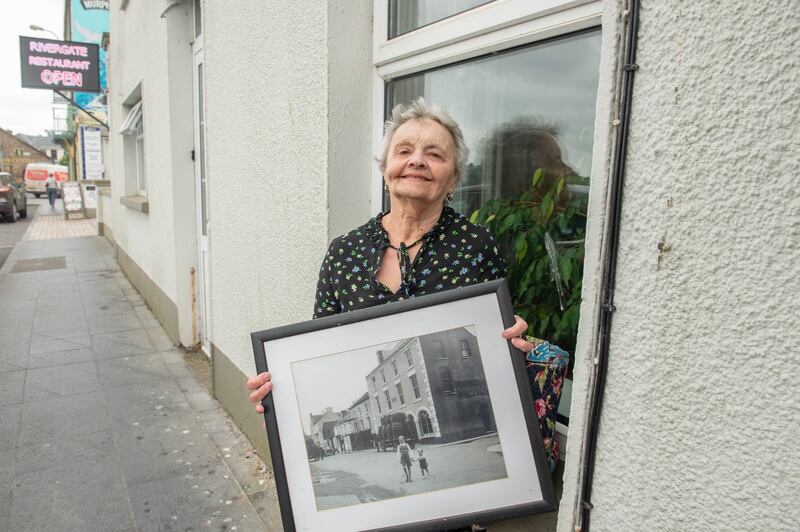
At the smallest kernel of its 597 pages, Moby Dick is the story of Captain Ahab, whose leg has been bitten off by a great white whale, and whose febrile quest for revenge leads to disaster for all but one aboard his ship, the Pequod. To read the book is to have the sensation of being trapped in a claustrophobic cabin at sea in the 1850s, with a madman in charge, as the ship pitches ever onwards towards doom. At the novel’s end, the reader gratefully climbs up behind Ishmael to escape with him as he floats away to rescue atop a wooden coffin.
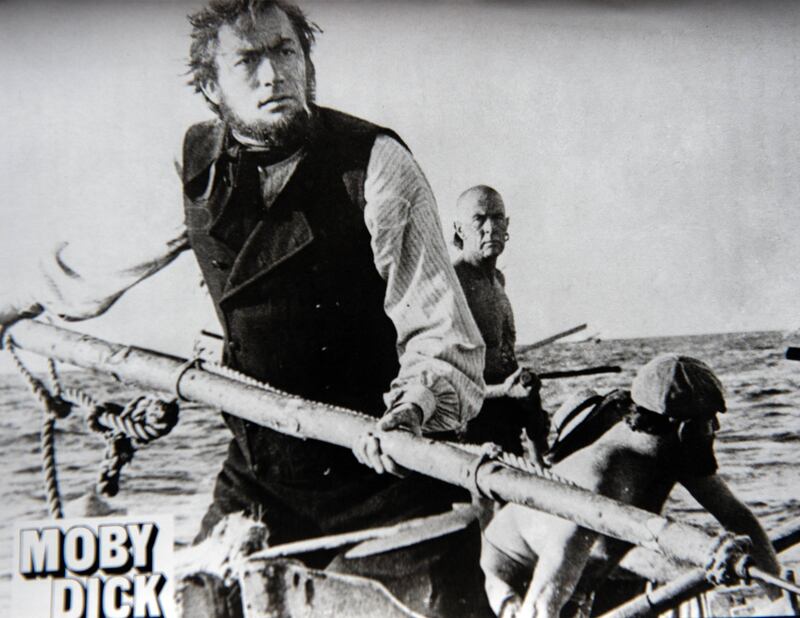
The film’s reluctant star was Gregory Peck: the studio needed a name, and Huston specifically cast him as Ahab for that reason, although Peck forever after unhappily declared he was miscast. The movie also starred Richard Basehart as Ishmael, Orson Welles as Fr Mapple, Leo Glenn as Starbuck, Noel Purcell as the Ship’s Carpenter, and Friedrich von Ledebur as harpoonist Queequeg.
Some of the houses around the quayside were given false clapboard fronts to create the illusion of New England architecture
The job of making a 1950s Irish fishing town look like a mid-19th-century American whaling port took weeks. Most of the scenes were shot in and around the harbour and quayside, some of them involving scores of extras, as the ship was provisioned for a long journey, and farewells were made.
“There was a lot of money being sloshed around,” local man Michael Hussey relates. Hussey has put together a few beguiling videos on YouTube of old photographs of the filming, spliced with interviews from various local people. I meet Hussey on the quayside, at Matthew Thompson’s beautifully spare statue of Captain Ahab, which was installed just three years ago.
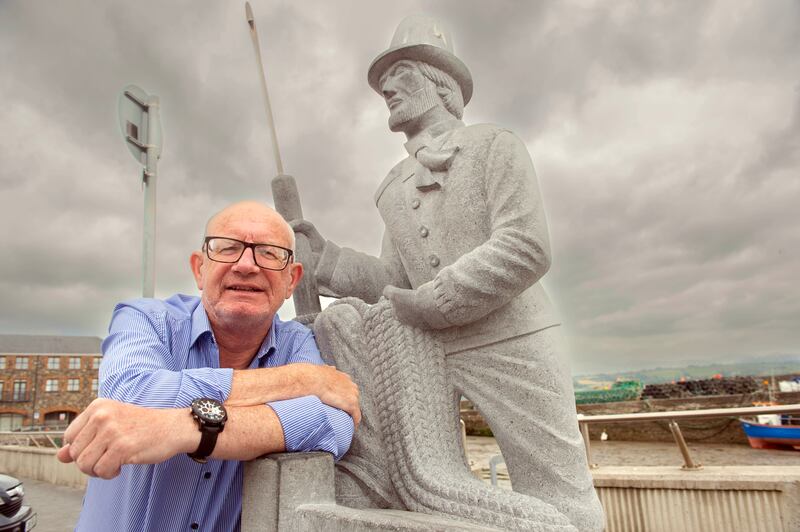
We are looking over at the harbour, where the Pequod – a schooner built in England in 1887 – was moored for much of the preparations and filming. Two other tall ships were brought into Youghal for the movie. They were Irish Light ships; the Harvest King and the James Postlewaite, 75 and 73 years old respectively. The final scenes from Youghal are of the Pequod sailing out to sea, as filmed from behind the lighthouse. I notice that the harbour seems quite shallow, and wonder aloud how it was able to accommodate the depth of the ship.
“The harbour was dredged,” Hussey explains. “By hand.” It’s details like this that explain why the budget for Moby Dick was reportedly the biggest for any Hollywood film made in Ireland at that time – while only a smallish part of the entire film was made there.
Some of the houses around the quayside were given false clapboard fronts to create the illusion of New England architecture. Others, such as the house Margaret Kelleher lived in, were painted trompe-l’oeil style. Poles were erected and decked out as ship’s masts to give the impression of a harbour full of tall ships, instead of the mere three that were brought in for the movie.
[ There she blows – An Irishman’s Diary on whales, Moby Dick and YoughalOpens in new window ]
Only 20 minutes of the film were filmed in Youghal, but those minutes are spliced into the first half-hour. Welles, playing Fr Mapple, a former whaler turned preacher, never came to Ireland. His famous sermon scene was filmed elsewhere. Youghal vanishes from the frames when the Pequod sails out of the harbour.
Among the other Moby Dick filming locations were Wales, the Canary Islands and Madeira, where graphic footage of actual contemporaneous whale-hunting was included – something modern viewers will find undoubtedly find challenging to witness.
Kevin Linehan’s father, Paddy, was the second generation of his family to work and live in the distinctive building on the quayside that is now called Moby Dick’s Bar. There’s a huge mural on the bar’s gable end of a whale and a boat in the big blue ocean. “We’ve been here since 1880,” says Linehan, who now runs the bar. “My people were butchers and publicans.”
Peck did not stay locally nor linger in the evenings nor mix with the public in the way the other actors and crew did
Back in 1954, Paddy Linehan’s pub was the focal hub of the action. It’s where John Huston had his meetings, and where the various members of the cast and crew along with extras drank in the evenings. The art department took up a room there. Today, the walls of the pub are covered with a number of atmospheric black and white photographs taken during filming that were carried in the newspapers of the day. Some of them were signed by the actors.
Peck’s autograph is not among them. He did not stay locally nor linger in the evenings nor mix with the public in the way the other actors and crew did. Instead, he stayed at the Metropole Hotel in Cork city, and was chauffeured in and out daily.
Also on display in Linehan’s is a wooden replica of the “ivory” peg-leg that Peck used during filming, along with a wooden harpoon, painted silver. “They are not originals,” Linehan clarifies. Contrary to popular belief and Youghal urban myths, they were never used as props.
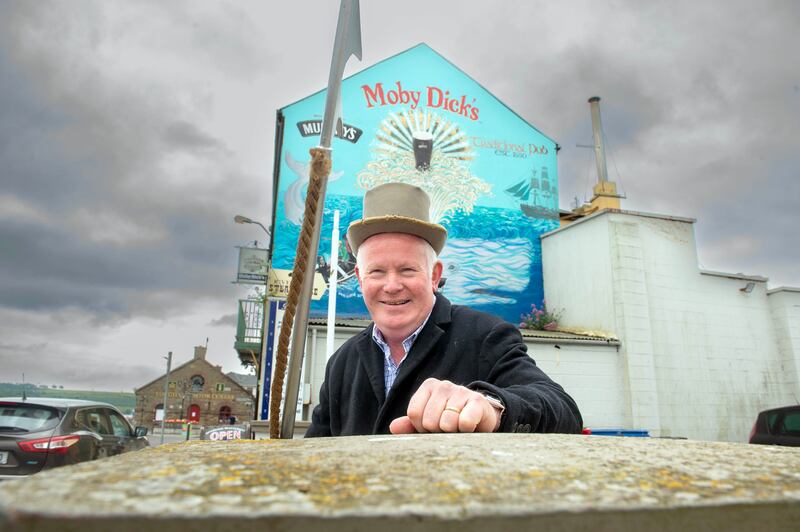
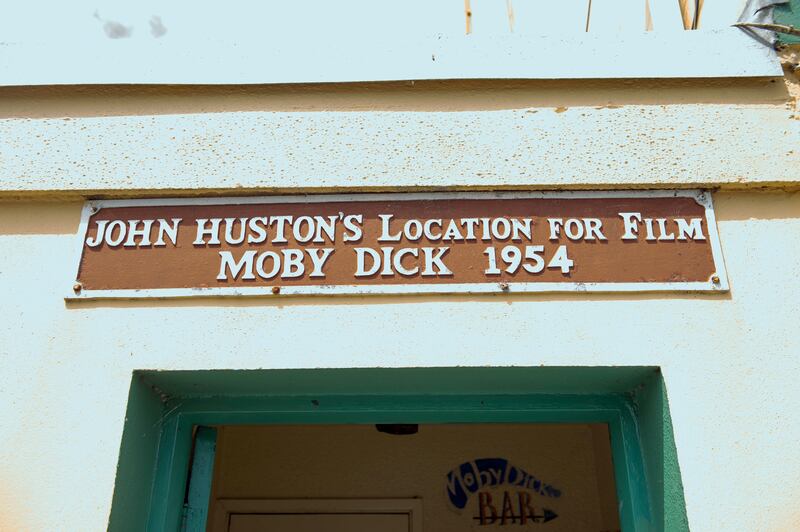
John McGrath is an extraordinary living example of Youghal’s history. He and his family were the last people to live in the town’s famous Clock Gate Tower, which arches over Main Street. In 1915, his grandfather John took up the job of caretaker at the Clock Gate. His duties were to wind the clock twice a week and to ring the bell to alert the fire-brigade, as needed. McGrath’s father, Christopher, took over the job, and McGrath and his siblings grew up there. His sister Nancy was in a wheelchair, and many stairs had to be negotiated.
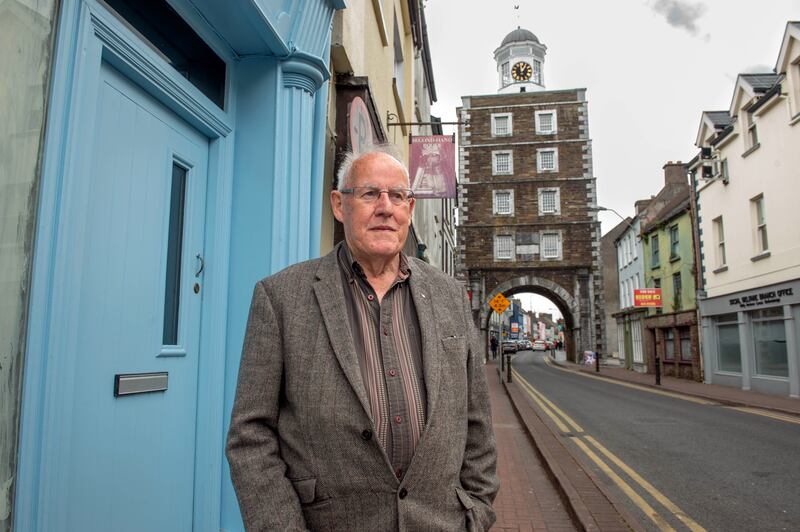
McGrath climbed to the top of the Clock Gate with me, from where there are spectacular views out over the town and harbour. It’s a straight view down to the quays, and this is where McGrath climbed to watch the action down at the harbour, and where he watched the Pequod ship sail away at the end of filming. In his pocket McGrath has a red autograph book that his mother, Agnes, bought for Nancy at the beginning of filming.
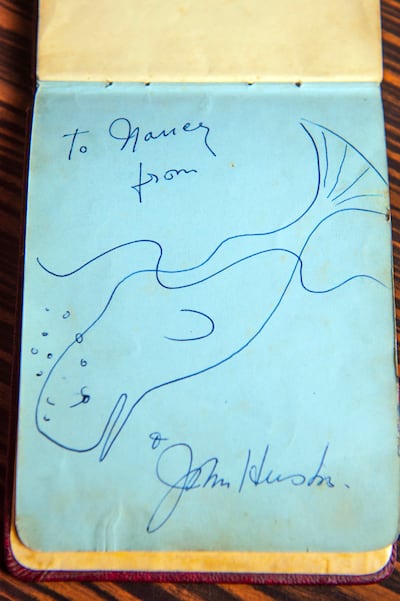
“Our mother got a job helping with the catering, and she asked the cast to write in it for Nancy,” he says. I open the little red book, kept so carefully all these years. There’s a drawing of a whale, signed by Huston. There’s a message from white-bearded Noel Purcell: “Nancy my dear, I’m a chap that looks like Santa Claus because of my beard, but the only thing I like about Christmas time is that Christmas Eve is my birthday.” There’s another signed drawing, in red, from Von Ledebur, of himself in costume for the role of Queequeg. Sixty-nine years on, they are still clear and vivid.
Many local people were employed by the movie. Some, like McGrath’s mother, helped with catering. Some, like Margaret Kelleher’s father, helped caulk the wood on the three ships in the harbour. Others got work as one of the 150 extras. The Town Hall on the quays was the costume department, where people went to get fitted for their bonnets and long dresses, shawls, shirts and trousers. According to local historian Kieran Groeger, adult extras were paid 32 shillings and sixpence a day, and children 10 shillings.
Margaret Kelleher was not an extra, but she participated in some publicity shots at the time. One of the elements the set designers added to the exterior quayside shots was an elevated wooden platform built over roofs and known as a Widow’s Walk. These were common in coastal New England houses. They were apparently built so that women could watch their seafaring menfolk depart from the harbour without the public pain of being on the pier itself. There is a scene in Moby Dick where a woman and two small children stand on such a platform. Kelleher was photographed for a media shot standing on this platform.
She recalls that the town was crowded at weekends by thousands of curious onlookers from surrounding areas. At the time she was in a choir, and the choir were filmed for a US television channel reporting on the making of the movie. Relatives and friends in the US who saw the footage wrote letters back home, marvelling at seeing their home town, friends, neighbours and relatives on screen. The caterers fed the choir while they were rehearsing. “The amount of food, we had never seen anything like it,” she recalls. “We would get cakes when we did our practice.”
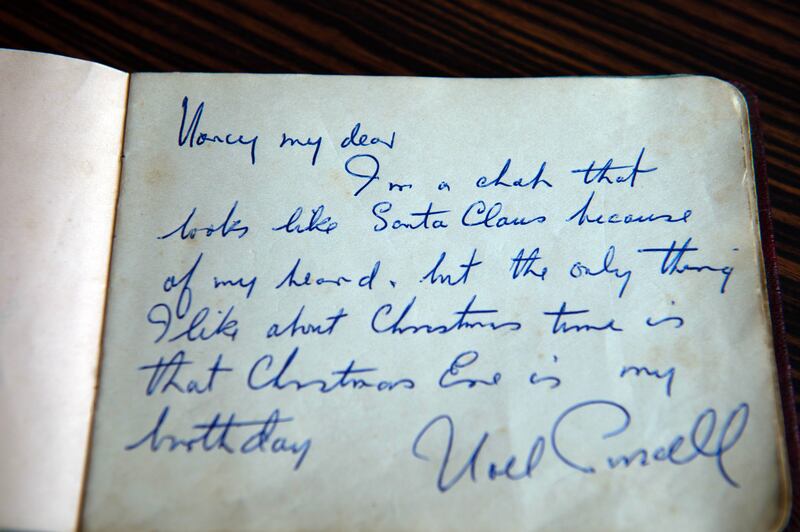
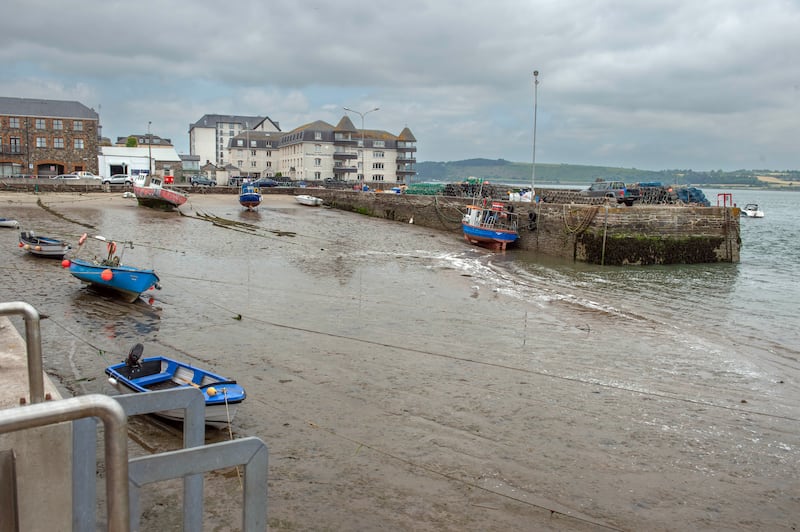
A key scene in the movie is when the women and children of New Bedford gather on the pier as the Pequod is about to finally sail away. “Everyone was told to look very sad, and keep walking forwards, to the end of the pier,” Michael Hussey recounts. “They didn’t know if they’d see their men again.” As it happens, the women of Youghal – like many others from fishing families all around the Irish coastline – were intimately familiar with disasters at sea and multiple loss of lives. There’s a plaque on a harbour wall in the town commemorating the loss of the schooner Nellie Fleming in 1936, “lost with all hands”.
This might be one reason it is such a haunting scene, in a movie full of such scenes. The faces of the older women, in particular, hold the eye with their expressions of a silent and terrible resignation.
There were two cinemas in Youghal at that time. Huston went daily to the art deco Regal Cinema on Friar Street to watch the rushes. This is where Moby Dick received its Irish premiere on February 26th, 1957; a one-night showing only. It later ran for a week at both cinemas in the town. The Regal is still in existence – it was beautifully renovated and restored some five years ago, with a wine-bar added, and remains a singular architectural gem in a town not lacking in such jewels.
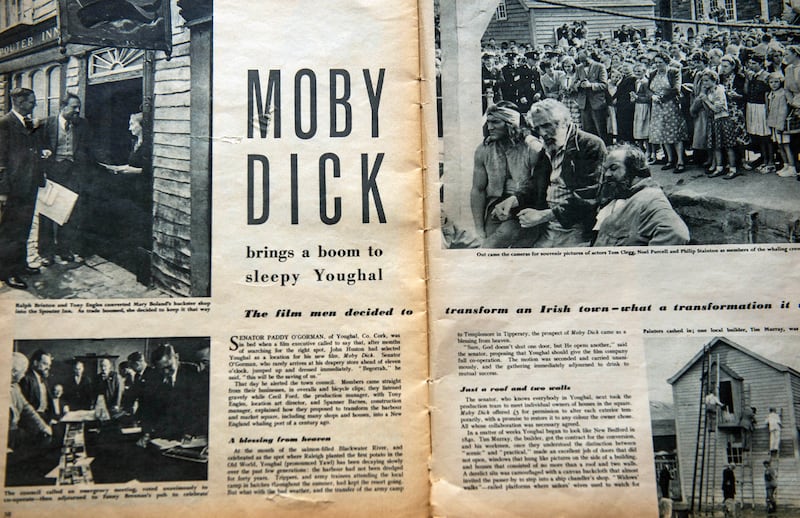
Moby Dick was not the first movie to star the Ryelands schooner. In 1950 it had been used in the filming of Treasure Island, before it was sold to Elstree Studios. The Ryelands turned out to be as doomed as its alter ego in the novel. The white whale destroys and sinks the Pequod in Melville’s novel. After being a starring presence in two movies, the Ryelands ship later went on fire while at harbour in Morecambe in England in 1972, and was completely destroyed.
Youghal is one of 11 sister towns and cities to New Bedford, most of them traditionally associated with whaling or fishing. Kevin Linehan has never been there, but plans to go some day to see for himself " the real place” that Youghal briefly became the replica of in 1954.
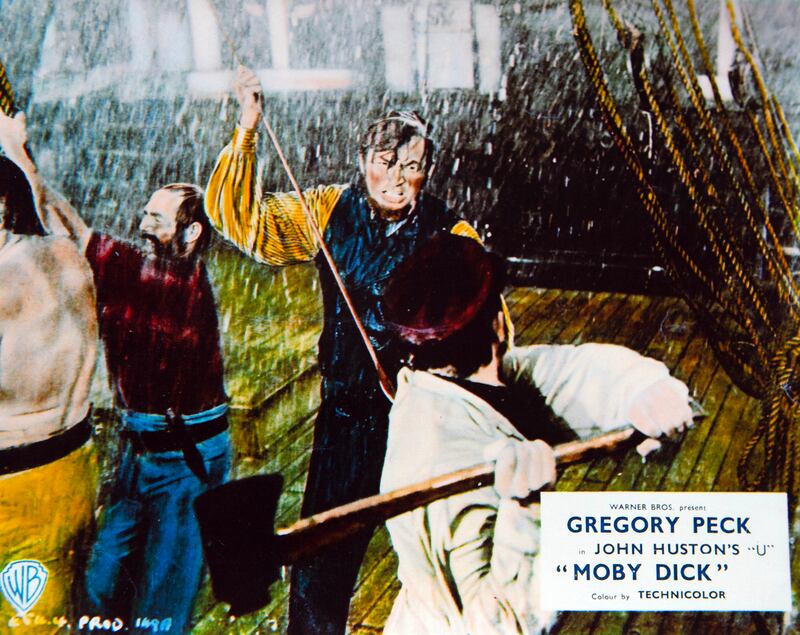
Moby Dick rated: Hearty, well-intended but let down by miscasting of Gregory Peck
Chief Film Correspondent Donald Clarke gives his assessment of Moby Dick
Star rating: ★★★☆☆
Critics risk posthumous embarrassment when, after a first glance or listen, they declare this or that a masterpiece for the ages. Bosley Crowther, famously haughty film reviewer for the New York Times, took just such a gamble with John Huston’s Moby Dick in 1956. “Herewith devoutly recommended as one of the great motion pictures of our times,” he wrote of an entertainment now treated with more respect than enthusiasm.
This overreach is a mere trifle when set beside the outrage visited upon the good people of Youghal: “Mr Huston and his technicians have done a remarkable job, even though they found their New Bedford in a rather poor little Irish port and used the faces of plainly Irish women as their brief frieze of sad New Bedford wives.”
Anyway, Moby Dick is not a bad film. It has that hearty, well-intended quality you require from TV entertainment for a bank holiday afternoon. Orson Welles has magnificent fun – as he always did with cameos – as the booming Fr Mapple. The action sequences have clatter and menace despite including, as David Thomson noted, “some awkward process shots”. But it will be forever let down by miscasting.
[ New film sparks memories of ‘Moby Dick’ in YoughalOpens in new window ]
Gregory Peck, possessor of a gentle hugeness, excelled as the understanding father in To Kill a Mockingbird. But he was too civilised for this weather-hammered avatar of morbid fanaticism. Peck thought Huston himself should have played Ahab. The director originally intended to cast Walter Huston, his gifted father, but that briny actor had died six years earlier. Either would have excelled.
Jonathan Rosenbaum, highbrow critic at the Chicago Reader, later argued that “if one can accept a Classics Illustrated version, this has its moments”. For what it’s worth, the Academy did not put a single Oscar nomination Moby Dick’s way.
Where can I watch it: Available to rent or buy from Google Play, Apple TV and Sky Store.












